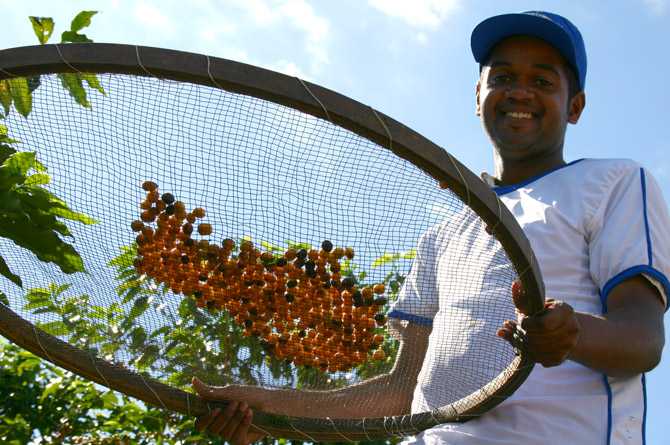Rains in the first fortnight of October in arabica producing regions encouraged growers to start planning the new season (2017/18). According to Cepea collaborators, many growers were searching for loans at banks to afford the crop and/or exchange coffee for inputs at cooperatives.
Besides crop management, rains in that period also favored flowering development. The negative biennial cycle in the main arabica producing regions may reduce coffee supply in 2017 and, thus, if the weather is unfavorable, production decreases may be even more significant.
Robusta growers were waiting for rains to start fertilizing. In Espírito Santo and Rondônia, crop failure is a conviction for next year, due to a strong drought that most of these regions have been facing since the beginning of the 2015/16 crop.
Drought and lack of water for irrigation led many coffee growers from Espírito Santo to uproot coffee trees, but some of them already show some interest in renewing part of coffee crops in the upcoming months, if rains are heavy.
In Rondônia, however, many growers have also uprooted coffee trees, but the renewal may not occur, since coffee growers are frustrated with coffee crops.
On October 14, the CEPEA/ESALQ Index, type 6, hard cup or better (delivered in São Paulo city), closed at 509.27 BRL (159.00 USD) per 60-kilo bag, a 1.23% rise compared to September 30.
For robusta, prices were on the rise in the first fortnight of the month, with occasional trades. The CEPEA/ESALQ Index of robusta type 6, screen 13 (Espírito Santo), closed at 495.10 BRL (154.57 USD) per 60-kilo bag on October 14, 7.7% up compared to the September 30.
















